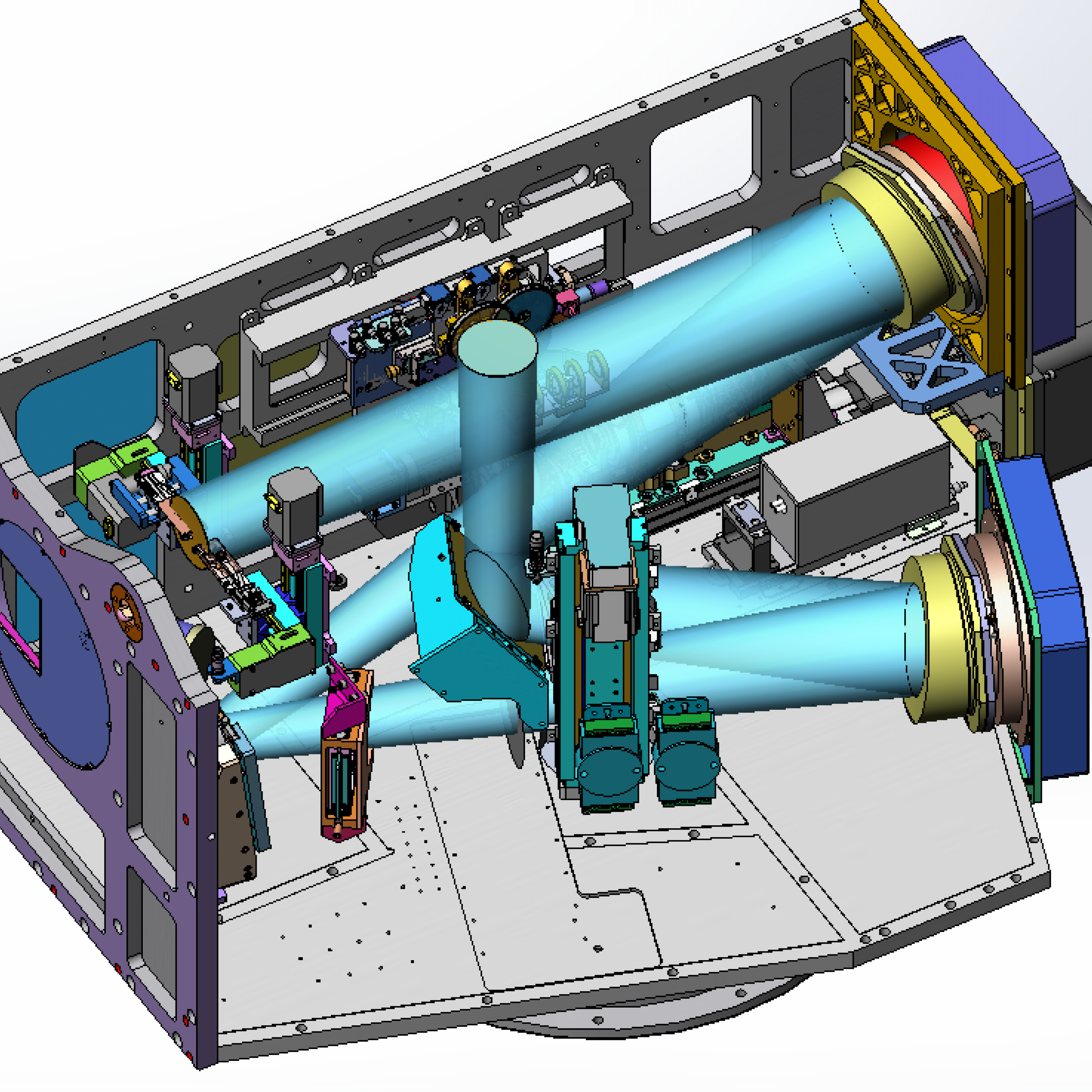
Adaptive Optics
Adaptive Optics is an instrumental technique to dynamically correcting optical aberrations (defects). In astronomy, this technique search for minimize the aberrations caused by the earth's atmosphere in observing astronomical objects. An adaptive optics system basically consists of a Wave Front sensor (which detect the wave front "shape" in optical subsystem), a Deformable Mirror (a mirror whose shape can be electronically controlled) and a control subsystem. In the adaptive optics control loop, the deformable mirror modifies the input wavefront such that its sensor records the residual optical aberrations, which are then adjusted back by the deformable mirror. These adjustments must happen hundreds times per second to compensate atmospheric changes. An electronic system working at this speed is called a real time system.
The SOAR telescope has an adaptive optical system called SAM (SOAR Adaptive Module). This system is a Ground Layer Adaptive Optics (GLAO), ie it corrects the turbulence generated at low altitudes of the atmosphere (approx. 5Km). This system does not make corrections near or at the fraction limit, but corrects a wide field in the sky, that is, a large area. The project was led by Dr. Andrei Tokovinin and ran between 2003 and 2013. In operation since 2014, SAM is responsible for numerous scientific publications. The SAM instrument designed approximately 13 years ago is technologically obsolete, resulting in poor performance in V-band turbulence correction (@ 500nm). In a partnership between IAG / USP, SOAR, UTFPR and LNA, at the end of 2017 the SAMplus project began.
What is SAMPlus?
SAMplus is the upgrade project of adaptive optics system currently operating in SOAR (SAM). In short, the project consists of replacing the key components of adaptive optics, namely the deformable mirror and wavefront sensor, operating with a new real time computer to control. The current version of SAM has a deformable mirror with 60 actuators; This proposal will be upgraded with a state-of-the-art DM with 241 actuators, such as a larger number of wavefront sensor sub-apertures, for increased turbulence sampling and a new CCD camera to increase sensitivite the laser flow used as guide star. In addition to improving visible wavelength correction, SAMPlus will extend the life of the adaptive optics module by upgrading key components. The project is funded by FAPESP and is led by the IAG instrumentation group.
SAMPlus Science Cases
The main objective of the upgrade, however, is to enhance science cases that will benefit from AO corrections at shorter wavelengths. Beyond the obvious areas that are already covered by SAM, SAMplus will significantly enhance spectroscopic observations. Important spectroscopic diagnostic lines lie at visible wavelengths, such as Balmer lines (Hα and Hβ), forbidden lines [NII], [SII], and [OIII], that will greatly impact studies of compact nebulae, nuclei of galaxies and gravitational arcs and multiple lensed quasar systems. Beyond the already available Fabry-Perot interferometer coupled to SAM (and its future upgrade, the BTFI-2 1 ), SAM will be integrated with IFU spectroscopy 2 and other SOAR instruments, such as the proposed multi-object spectrograph SAMOS 3 . The combination of SAMplus with the latest SOAR instrumentation is in strong synergy for follow-up observations of discoveries and transient events that will be detected by the neighboring LSST observatory.
Brazilian Participation
The new components of SAMPlus will be tested and characterized by the IAG / USP instrumentation group. These tests include mounting a bench prototype that simulates SAM operation, to test the components in real turbulence correction in a closed loop, ie. in a system where the deformable mirror and wavefront, are connected to a real time control. All control software will be developed and tested at IAG. These tests are scheduled for 2020, by 2021 the new components will be installed in the SOAR adaptive optics module for SAMPlus commissioning.
Click here to see SAMPlus Science Case .
GMTBrO 2025